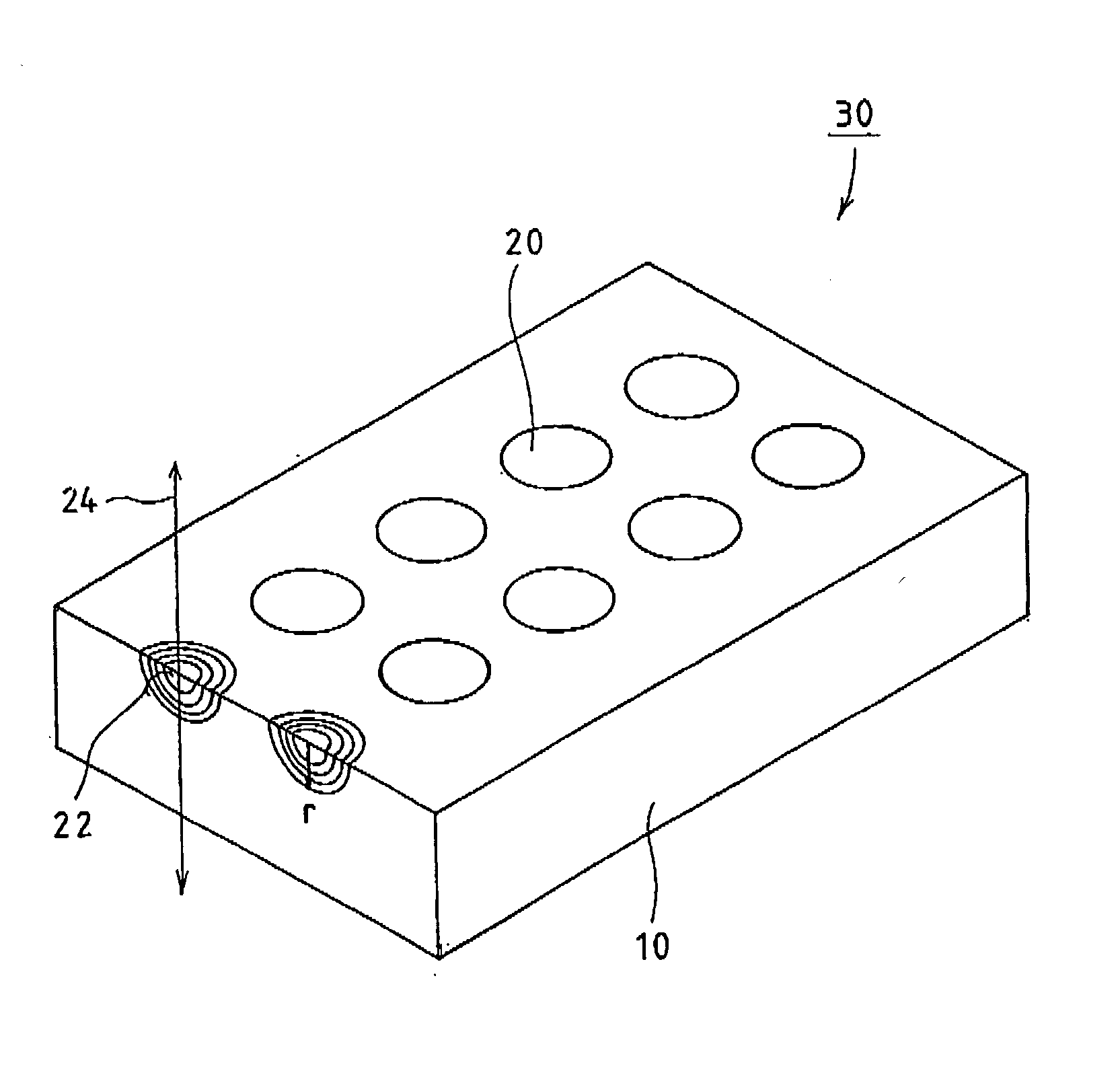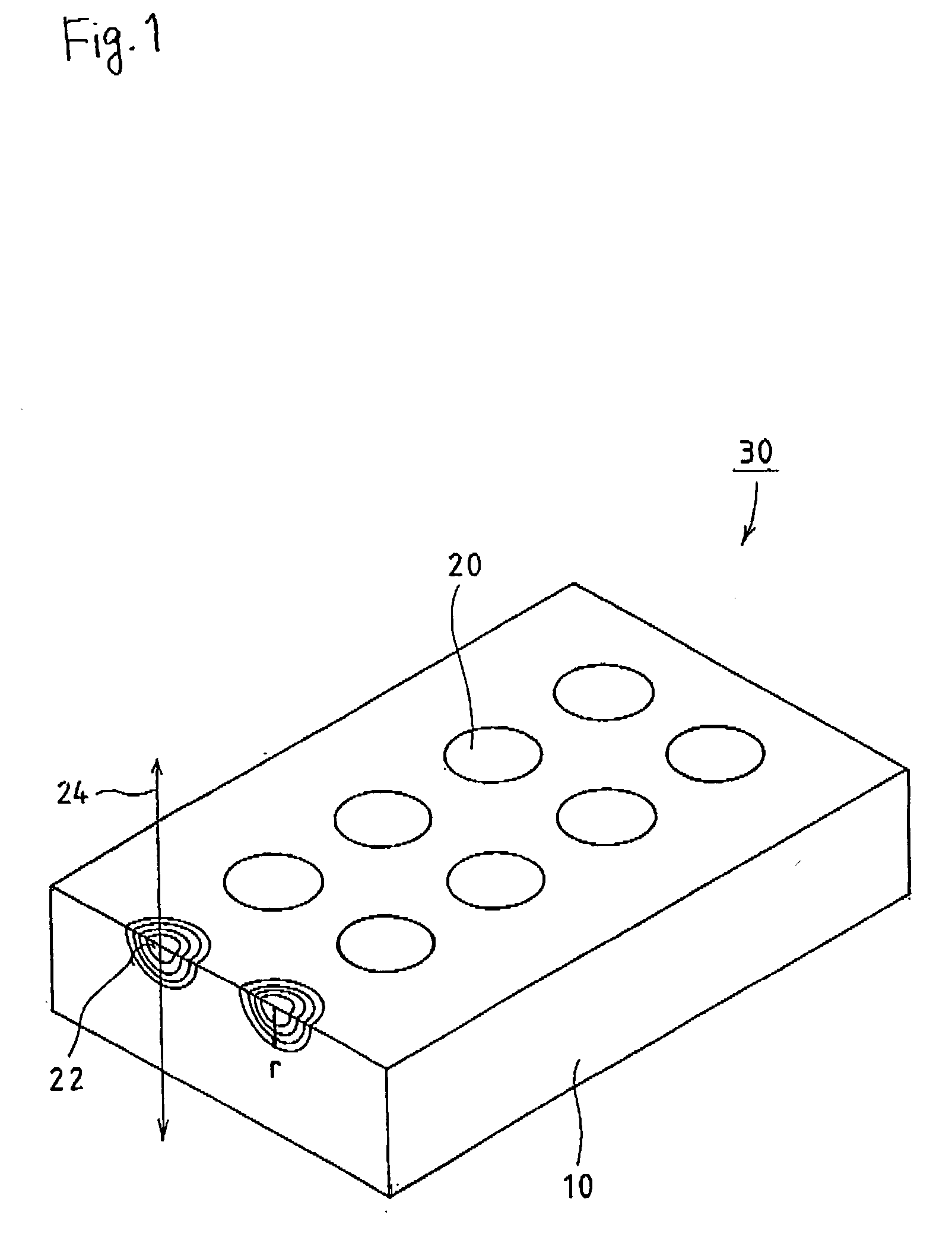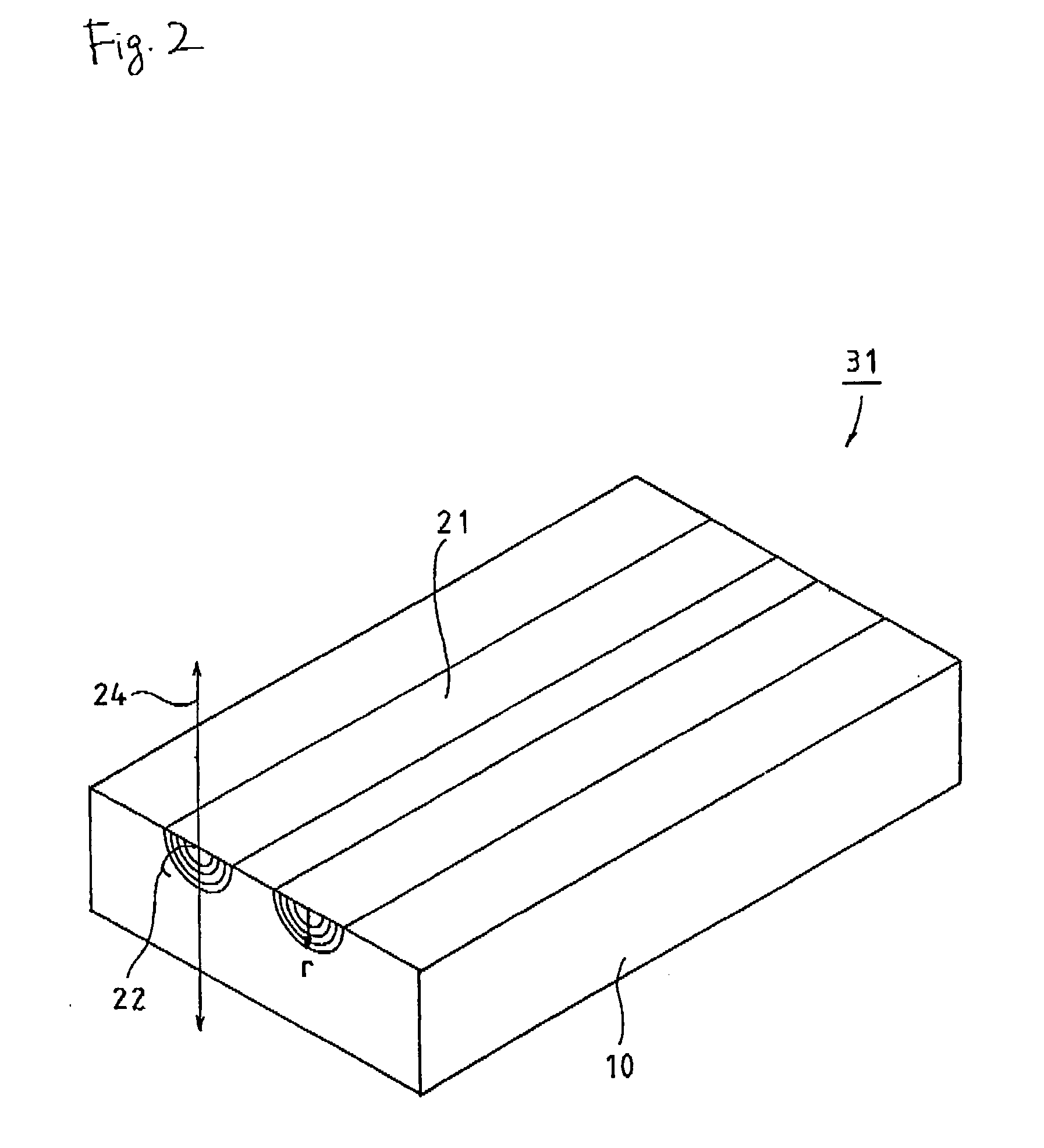Planar lens
a lens and planar technology, applied in the field of planar lenses, can solve the problems of deterioration in chemical resistance, difficult preparation of lens diameters less than 100 mm, glass has a drawback of poor chemical resistance,
- Summary
- Abstract
- Description
- Claims
- Application Information
AI Technical Summary
Benefits of technology
Problems solved by technology
Method used
Image
Examples
example 1
[0210] A planar lens was produced using a substrate having the mother glass composition shown on the Example 1 column of Table 1 and performing ion exchange treatment under the foregoing condition. The planar lens thus produced was examined for refractive index distribution by use of light with a wavelength of 546 nm, and the result obtained is shown in FIG. 9. As illustrated therein, the n-r curve in Example 1 has proved to be clearly "upwardly convex" in shape. Further, n.sub.2 / n.sub.1 was found to be 1.029 greater than 1. Additionally, the shape of this n-r curve corresponds to FIG. 5C.
[0211] On the other hand, the concentration distribution of Ag was measured by EPMA. And the results thereof are shown in FIG. 10. As can be seen therefrom, the a-r curve also had a clearly "upwardly convex" shape, and a.sub.2 / a.sub.1 was found to be 4.61 greater than 1.
[0212] From a comparison of the n-r curve shown in FIG. 9 and the a-r curve shown in FIG. 10, it can be seen that the refractive i...
examples 2 to 13
[0214] Table 1 also shows the composition and a.sub.2 / a.sub.1 ratio of Examples 2 to 13. All the samples show a.sub.2 / a.sub.1 ratio of greater than 1.0, which means that the distribution curve is upwardly convex.
[0215] On the other hand, a-r curve of Example 11 has an a.sub.2 / a.sub.1 ratio as small as 1.60, which means a small upwardly convex degree, as compared with Example 1 (FIG. 10) as shown in FIG. 11. In this case, the numerical aperture is 0.08, which is greater than the expected value (0.05) in the linear distribution of refractive indices but smaller than that of Examples 1 and 2.
example 14
[0216] While all the samples of Examples 1 to 13 comprise SiO.sub.2 diffused therein as a main component, the present example provides an example of glass containing B.sub.2O.sub.3 and LiO.sub.2 in almost the same concentration besides SiO.sub.2. In this case, a.sub.2 / a.sub.1 ratio is as great as 2.5, which means that the distribution curve is convex.
PUM
| Property | Measurement | Unit |
|---|---|---|
| Distribution | aaaaa | aaaaa |
| Refractive index | aaaaa | aaaaa |
Abstract
Description
Claims
Application Information
 Login to View More
Login to View More - R&D
- Intellectual Property
- Life Sciences
- Materials
- Tech Scout
- Unparalleled Data Quality
- Higher Quality Content
- 60% Fewer Hallucinations
Browse by: Latest US Patents, China's latest patents, Technical Efficacy Thesaurus, Application Domain, Technology Topic, Popular Technical Reports.
© 2025 PatSnap. All rights reserved.Legal|Privacy policy|Modern Slavery Act Transparency Statement|Sitemap|About US| Contact US: help@patsnap.com



